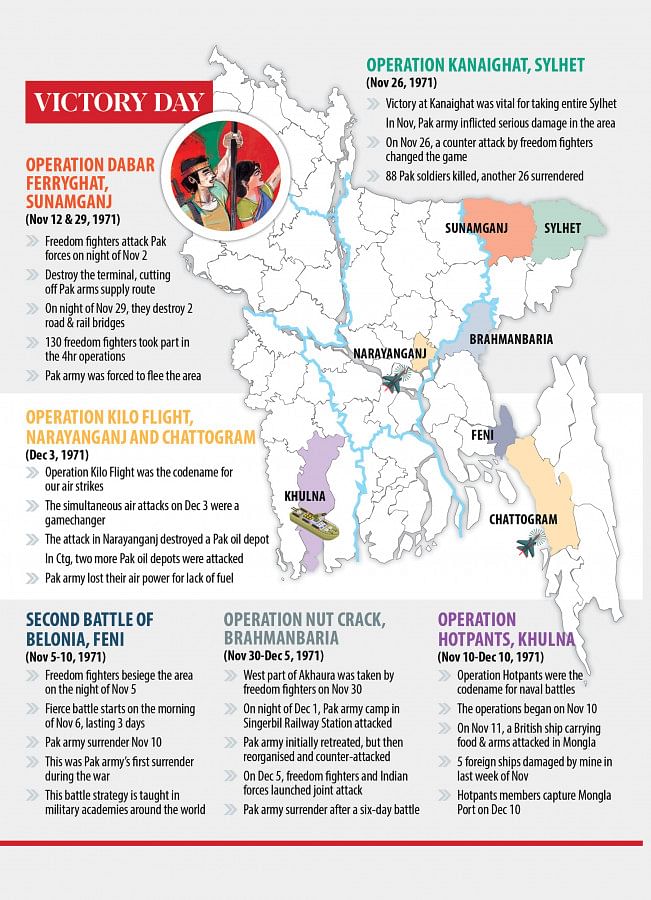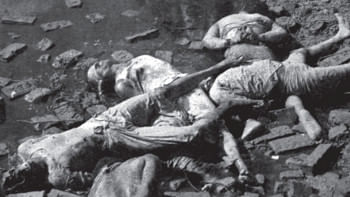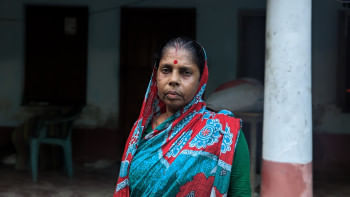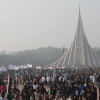Battles that quickened victory
Throughout the Liberation War, Mukti Bahini waged numerous guerrilla attacks as well as strategically crucial and well-planned battles across the country against the invading army, with the outcomes swinging back and forth between the two forces.
Undeterred by setbacks, the freedom fighters held their nerve, and their resolute spirit fuelled the fight to liberate Bangladesh.

Some of these battles were marked by incredible bravery and daring military tactics. Ultimately, the freedom fighters triumphed in these crucial engagements, shifting the tide of the war decisively.
Victories in these battles not only solidified Mukti Bahini's position across the country, but also eroded the Pakistan army's confidence and morale, leading to their surrender on December 16, 1971.
Drawing upon extensive research from books and documents on the Liberation War and interviews with war veterans and researchers, The Daily Star identified six such battles that fundamentally reshaped the course of the war in the final days of the nine-month bloody war.
Second Battle of Belonia
This battle marked the first surrender of Pakistani forces to Mukti Bahini, according to the book "Feni-Belonia Ronanggonee Ak Prantor".
The battlefield stretched across Parshuram, Fulgazi and Chhagalnaiya upazilas of Feni, witnessing intense fighting from November 5-November 10 and strengthening Mukti Bahini's momentum while weakening the Pakistani hold.
On the night of November 5, after a Karthik rain, darkness and silence descended on the land. Under the cloak of night, freedom fighters led by Major Zafar Imam (later lieutenant colonel) of the 10th East Bengal Regiment, crossed into Bangladesh from India.
Moving with stealth and precision, they surrounded a vast area of Belonia bordering India on three sides. Before dawn, the freedom fighters had already established their positions and dug trenches throughout the night, ready for the challenge ahead. Unaware of the trap, the Pakistani forces were oblivious to the danger lurking in the shadows.
On November 6, a fierce battle erupted in the morning as freedom fighters besieged the Pakistan army in Belonia. For three gruelling days, the outnumbered freedom fighters fought hard.
On November 9, desperate Pakistani forces called in airstrikes with four Sabre jets in an attempt to break the siege. However, their efforts fell short when Mukti Bahini brought down one of the Sabre jets with machine gun fire. Faced with unrelenting resistance, the Pakistani troops surrendered on the night of November 10.
"Winning the battle of Belonia changed the course of the war as its location held immense military value. The immediate aftermath of this victory instilled a sense of confidence across the country, fuelling the flames of resistance. Even today, the tactical brilliance employed in the Belonia campaign continues to be taught in military academies worldwide," Lt Col (retd) Zafar Imam Bir Bikram, the commander of the 10th East Bengal Regiment, told The Daily Star in an exclusive interview recently.
Operations Dabur Ferry Ghat and Jawa Bridge Demolition
"Swadhinata 71 Muktijuddhe Jonojoddha", another book on the war, gives a vivid account of two crucial operations that took place in Sunamganj, codenamed "Dabur Ferry Ghat" and "Jawa Bridge Demolition".
Although fought on separate days, both were led by Second Lieutenant (later Lieutenant Colonel) Abdur Rouf.
The Dabur Ferry Terminal served as a crucial transport hub, connecting Sylhet and Sunamganj by road. In early November, Sector 5 Commander Lt Col Mir Shawkat Ali entrusted Abdur Rouf with a critical mission: he must destroy the ferry terminal by November 15.
At the time, the terminal was heavily guarded by a platoon of Pakistani 91 Mujahid Battalion and a group of Razakars.
Despite the odds, on the night of November 12, a single platoon of freedom fighters led by Abdur Rouf launched an ambush on the enemy.
In a two-hour battle, they engaged with Pak soldiers and Razakars guarding the terminal. Rouf and his team eventually overcame the enemy defence and seized control of the ferry terminal.
They immediately proceeded to their next objective: destroying the ferry itself, which they successfully did using limpet mines.
Meanwhile, in the middle of October, the 3rd East Bengal Regiment captured the Chhatak Cement Factory -- a key military installation in the town -- but they could not hold it.
To consolidate their position, Sector Commander Mir Shawkat Ali ordered 2nd Lt Abdur Rouf to destroy the Jawa road and rail bridges by November 30.
On the night of November 29, a group of 130 freedom fighters led by Rouf launched an attack on the two Jawa bridges. In a four-hour battle, they engaged in combat with Pakistani forces guarding the bridges.
Using explosives, Mukti Bahini destroyed both the road and rail bridges, dealing a severe blow to Pakistani logistics and their ability to defend the region, forcing the enemy to flee the area.
Talking to The Daily Star, Lt Col (retd) Abdur Rouf Bir Bikram, said, "With these two battles, we crippled the Pakistani forces in the Sylhet region. The destruction of the Dabur Ferry Ghat effectively halted all Pakistani supplies in Sunamganj, while the Jawa Bridge demolition allowed us to take control of vital areas like Chhatak, Doarabazar, and Tengratila."
Kanaighat Counteroffensive
The war saw many acts of bravery and strategic brilliance, and the Kanaighat counteroffensive stands out as a shining example. This daring operation, undertaken by freedom fighters of Sector 4, proved to be a pivotal moment in the battle for Sylhet, changing the course of the war.
According to the book titled "Bangladesher Swadhinota Juddho -- Brigade Bhittik Itihash", two companies of the Pakistani 31st Punjab Regiment had strongholds in Kanaighat and Darbast, strategic towns connected by a single road. This route had to be taken for the Mukti Bahini and Mitro Bahini (joint forces) to liberate Sylhet.
In the third week of November, the 1st East Bengal Regiment, having liberated Atgram and Zakiganj, reached Gauripur on November 22.
However, their progress was met with fierce resistance. Alpha Company of the 31st Punjab Regiment ambushed Alpha and Bravo Companies of the 1st East Bengal Regiment, inflicting heavy damage.
On November 26, Second Lieutenant Waqar Hassan, platoon commander of the Delta Company of the 1st East Bengal Regiment, led his team in a counteroffensive. Despite facing heavy casualties, Waqar rallied his remaining forces and turned the tide of the battle.
His courage and tactical skill resulted in the surrender of 26 Pakistani soldiers and the deaths of 88 others, including their commander Major Sarwar.
"If we hadn't won that battle, capturing Kanaighat would have been impossible, and consequently, the battle of Sylhet wouldn't have been ours," Major Waqar Hasan Bir Pratik told The Daily Star.
"The courage displayed by a single platoon of freedom fighters against the formidable 31st Punjab Regiment that night was truly exceptional," he said.
Operation Nut Crack
The battle to capture Akhaura, codenamed Operation Nut Crack, was fought between November 30 and December 5 in Brahmanbaria. Victory in this battle paved the way for the liberation of the capital, Dhaka, and ultimately of the nation.
According to the largest collection of Liberation War documents, "Bangladesher Swadhinota Juddho: Dolil Potro (Volume 10)", the control of Akhaura, a crucial railway junction, would allow Mukti Bahini to sever communication and supply lines for the Pakistani army, compromising their operation capabilities in Chittagong and Sylhet.
On November 30, the 2nd East Bengal Regiment launched an ambush on the enemy soldiers in Akhaura. Supported by the Indian 10th Bihar Regiment, they successfully captured the western parts of the town.
Following their initial success, the 2nd East Bengal Regiment embarked on the second phase of their offensive. On the night of December 1, they launched a raid on the Pakistani forces at Singerbil railway station base.
The attack was met with fierce resistance from the Pak army, leading to a brutal exchange of fire and heavy losses on both sides. The fighting continued throughout the night and into the early hours of December 2.
Initially, the Pak forces were forced to retreat, but they soon regrouped and launched a counteroffensive. This action ignited another intense battle that lasted until 5:00am.
Despite the initial setback, the 2nd East Bengal Regiment launched a counterstrike of their own. This relentless push led to the capture of the adjacent Azampur railway station on December 3.
On December 4, two Indian brigades joined forces with the freedom fighters, further bolstering their strength. The combined force surrounded the Pakistani troops by December 5.
After six days of combat, the Pak army, facing odds and dwindling supplies, was finally forced to surrender along with four of their brigades.
"Through this relentless week-long campaign, we significantly weakened the Pakistani army. It was a pivotal moment in the war, and after this victory, the liberation of Dhaka was inevitable. We effectively disrupted their logistical support for troops stationed in Chittagong and Sylhet," Dr Md Anisul Hasan, the commander of Alpha Company during Operation Nut Crack, told this newspaper.
Operation Kilo Flight
While ground forces made significant contributions to the war, the role of the air wing cannot be underestimated. Operation Kilo Flight is the code name for all aerial operations launched by Mukti Bahini during the war.
Alamgir Sattar's book Kilo Flight describes the success of two operations conducted on December 3, which proved pivotal in the outcome of the war.
On October 28, Mukti Bahini's combat aviation was formed in Nagaland, India, with only three civilian aircraft. These aircraft were modified and equipped for military operations. Subsequently, a rigorous training programme for pilots was conducted by Indian Air Force instructors.
On December 3, when Pakistan launched an attack on India, Mukti Bahini's Operation Kilo Flight initiated its first air strike. Squadron Leader Sultan Mahmud, commander of the operation, and Flight Lieutenant Badrul Alam targeted the vital Oil Depot at Godnail in Narayanganj.
Simultaneously, Kilo Flight members Captain Akram Ahmed and Flight Lieutenant Shamsul Alam carried out an attack on the Eastern Oil Refinery at Patenga in Chittagong. These air strikes, on the same night, destroyed a significant portion of the Pak army's fuel reserves.
Captain Alamgir Sattar Bir Pratik, a key proponent for Mukti Bahini's air wing, said, "The success of Operation Kilo Flight sealed the fate of the Pakistani forces. The Eastern Oil Refinery in Patenga and the Oil Depot in Narayanganj housed their primary fuel reserves. By bombing these facilities, we crippled their air capabilities. This victory not only secured our land but also freed the skies of Bangladesh."
Operation Hotpants
While ground and air forces were instrumental in the war, the contributions of the naval forces cannot be overlooked. Operation Hotpants, a critical campaign conducted by the Bangladesh naval fighters, played a vital role in disrupting Pakistani logistic supplies.
It is mentioned in the book "Muktijuddhe Nou Senani", that building upon the success of Operation Jackpot in August, Mukti Bahini launched another naval operation in Khulna region -- Operation Hotpants.
Conducted from the second week of November to the second week of December, this campaign further solidified the dominance of the Mukti Bahini at sea.
Following Operation Jackpot, the naval fighters, despite numerous small operations utilising limpet mines and small explosives, faced limitations in launching large-scale attacks. This led Jalal Uddin, adviser of Operation Jackpot, to recognise the need for gunboats to bolster Mukti Bahini's naval capabilities.
Responding to his request, the Calcutta Port Trust provided two decommissioned patrol boats to the liberation army's naval unit. These boats underwent extensive modifications and were transformed into gunboats, and were renamed "BNS Padma" and "BNS Palash".
On November 10, Operation Hotpants officially commenced with the deployment of these two gunboats. Their initial mission was to lay mines at the entrance of Mongla Port, a crucial logistical hub for the Pakistan army.
Following the success of the mine-laying operation, the naval fighters intercepted a British ship, the "City of St Albans," on November 11. This vessel, carrying a massive cargo of 10,000 tonnes of food, supplies, and weapons destined for Mongla from Karachi, was forced to turn back, denying the Pakistani forces necessary resources.
On the same day, the Pakistani gunboat "Tofail" was sunk by a mine explosion in the Zulfiqar Channel, resulting in the deaths of 35 soldiers.
Throughout the last week of November, five foreign ships attempting to deliver supplies to the Pak forces were damaged by hidden mines.
On December 10, following a series of operations, Mukti Bahini naval fighters achieved a major victory by capturing the strategically important Mongla Port. This cut off a vital supply line for the Pakistani forces and dealt a significant blow to their operations in the south-western region.
Lt Cdr Jalal Uddin Bir Uttam, a key member of both Operation Hotpants and its predecessor, Operation Jackpot, reflected on the significance of the naval campaign while speaking to The Daily Star.
"The British ship we intercepted on November 11 carried 2,000 tonnes of heavy weapons. Had this shipment reached Mongla unhindered, the war would have been prolonged. Furthermore, the damage inflicted on several foreign vessels disrupted the entire maritime movement, severing the Pakistani army's supply chain in the southwest. By the time we captured Mongla Port on December 10, their defeat was all but inevitable," he said.

 For all latest news, follow The Daily Star's Google News channel.
For all latest news, follow The Daily Star's Google News channel. 










Comments